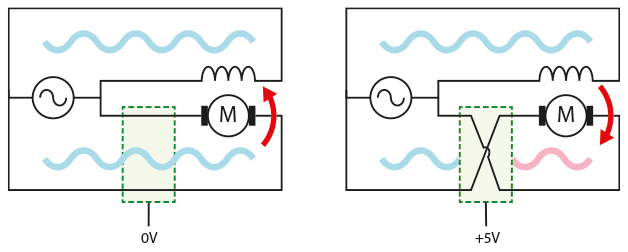I would like to modify a sewing machine motor so I can reverse its direction electronically.
Domestic sewing machine motors are universal motors with two wires – the input AC is connected through the field and armature windings in series, which means a stock motor will only run in one direction. My
My plan is to physically modify a motor so the two windings are connected in parallel:
And thenThen the motor can be run backwards by reversing the current through one winding:
My question is, whatWhat goes in the green box in this diagram? That is, how can I use a logic-level signal to reverse the polarity of the AC? Is there an AC version of an H-bridge IC, or some similar component I can just drop in? Or wouldWould it be easier to full-wave rectify the input, and use a "normal" H-bridge (i.e.to run it as a DC motor)? This is a new area for me, so I'm not sure what to watch out for, or how these options might affect the motor's performance.
- The motor will run on 220VAC at, say, 1A.
- I don't expect it to change direction frequently, or while the coils are energised, but the circuit should be able to survive if those things do happen.
- I know there are some mechanical challenges too, but assume I can resolve those...


